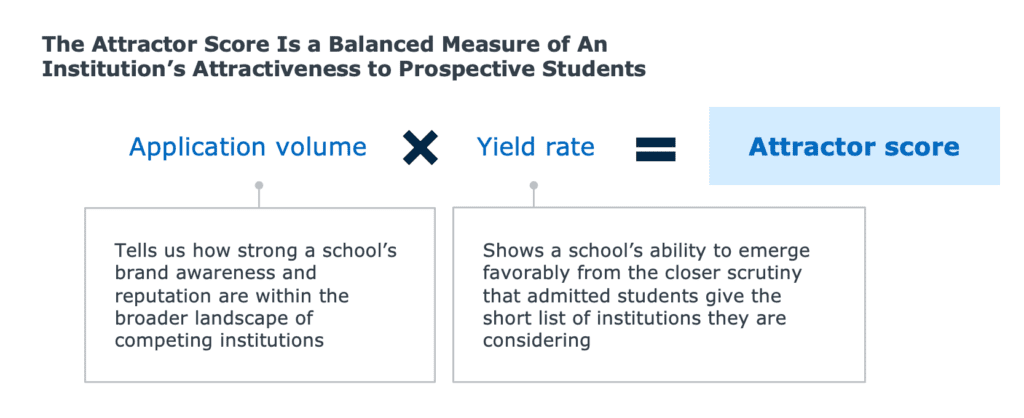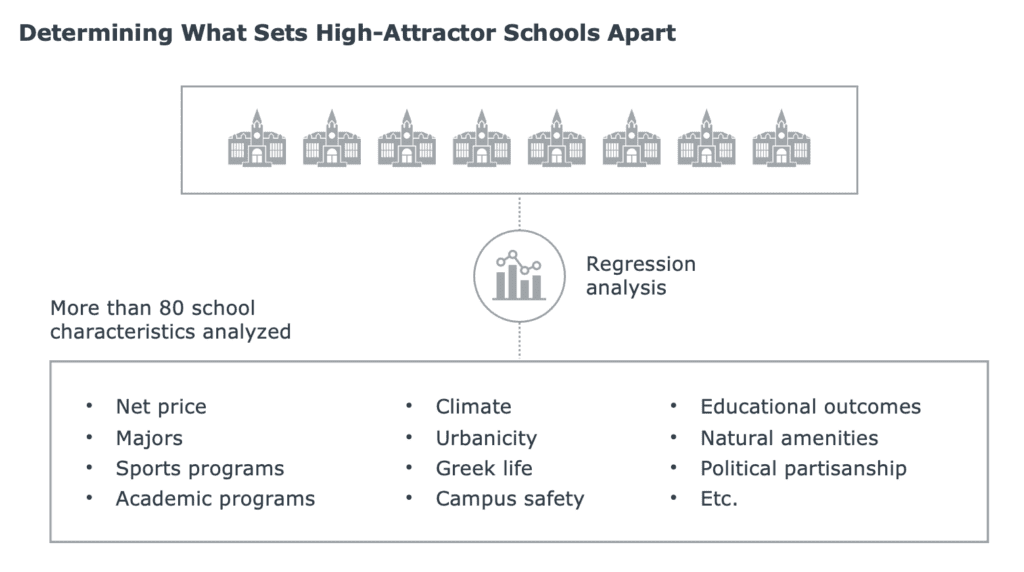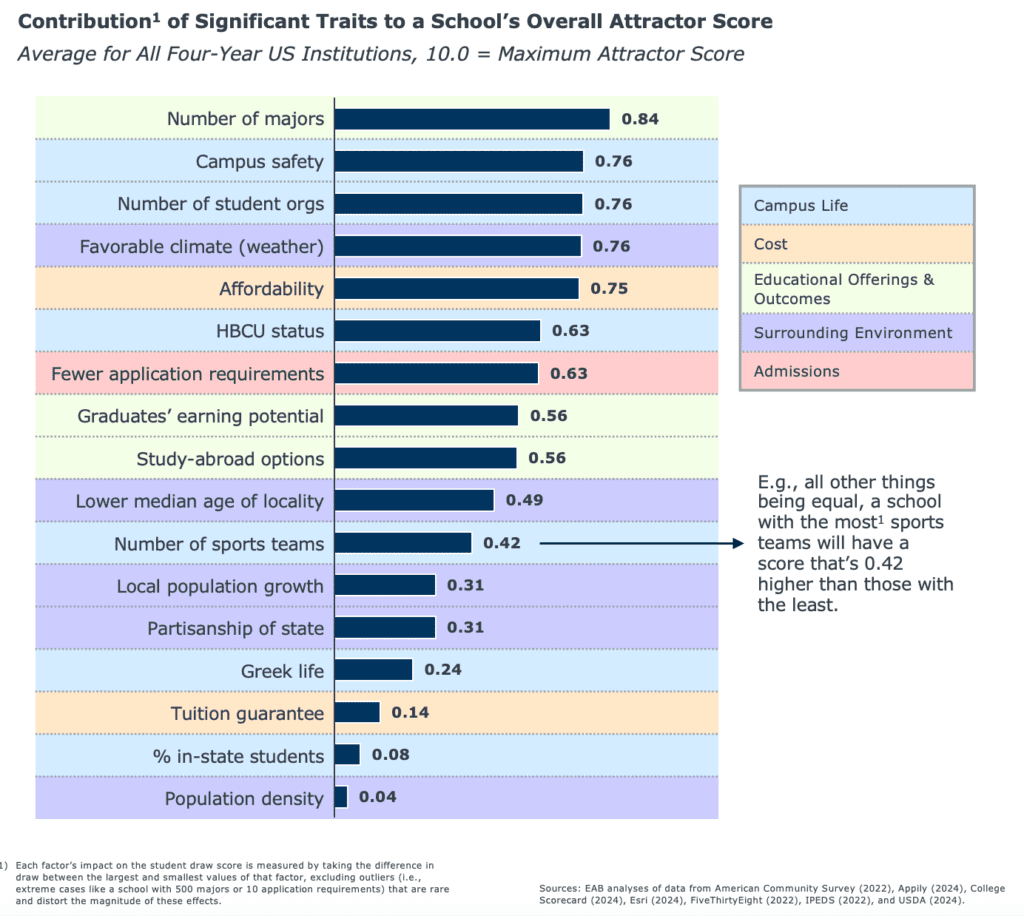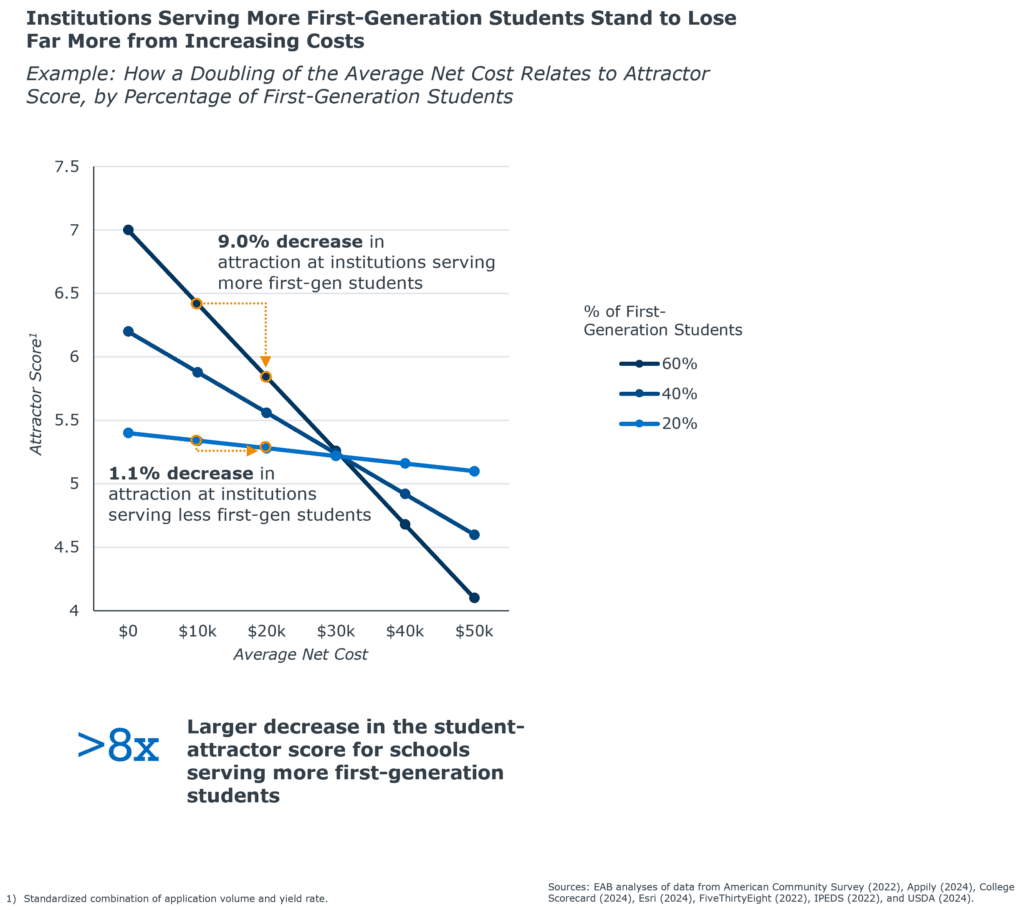Why do students pick the schools that they do?
Understanding what attracts students to a school when they’re conducting their college search is critical for developing a recruitment strategy. Our latest research reveals both expected and unexpected factors—ranging from affordability to the social and political context of a school’s location—that drive student interest. These insights can help enrollment leaders align their strategies with the traits that resonate most with prospective students, providing a new lens through which to view enrollment success.
Measuring a school’s appeal
To capture what makes a school appealing, we analyzed two key metrics: the number of applications a school receives and its yield rate (the percentage of admitted students who enroll). Together, these measures form our “attractor score”—a holistic reflection of a school’s ability to attract and convert students.

We then examined more than 80 variables that prospective students can easily access in their college search, identifying 17 key characteristics that statistically influence a school’s attractor score. These include traditional drivers like affordability but also extend to campus life and environmental features, such as the number of student organizations, the weather, local politics, and population growth in the surrounding area.
The Hidden Impact of Your Student Recruitment and Influence Channels

This analysis helps us answer a range of questions, such as:
- Which traits have the greatest influence on student attraction?
- How much does the surrounding environment impact the attractor score?
- What is the effect of an increase in average net cost on the attractor score?

Key findings
- Campus and Environmental Factors: Features like the number of student organizations or the surrounding weather significantly affect the attractor score, underscoring the importance of both internal and external traits.
- Segmentary Differences: The impact of these factors isn’t uniform—it varies by school size, selectivity, and student demographics, providing tailored opportunities for schools to enhance their appeal.
- Size Matters: Larger schools generally have a higher attractor score due to their scale. However, smaller schools gain a proportionally greater boost from investments in campus amenities and academic offerings, making these areas critical for differentiation.
- Affordability is Crucial: Unsurprisingly, cost is revealed to be a top consideration, especially for Pell Grant recipients, first-generation students (see the chart below), and part-time learners—all of whom are particularly sensitive to price changes. This underscores its enduring importance, even as other, less expected characteristics emerge as strong revealed preferences as well.

Watch the On-Demand Webinar: Why Students Pick the Schools They Do
What’s next?
This research sets the stage for a deeper understanding of the types of schools students are drawn to during their search. In our next post, we’ll present nine institutional personas revealed by this research. These personas represent distinct clusters of schools based on these traits that affect school attraction, offering a novel framework for benchmarking your institution against peers.
In that post, you’ll learn how to:
- Identify which persona aligns with your school’s characteristics.
- Assess your strengths and weaknesses relative to your peers.
- Leverage persona insights to navigate regional and competitive dynamics.
By understanding the broad effects explored here and the tailored insights of your school’s unique persona, you can uncover strategic opportunities to enhance your competitiveness and refine your recruitment strategy.

More Blogs

Demographics shape the enrollment landscape, but strategy determines success

What changed in the graduate lead gen landscape in 2025
